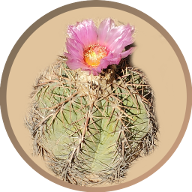- Saguaro (Carnegiea gigantea)
- Buckhorn Cholla (Cylindropuntia acanthocarpa)
- Desert Christmas Cholla (Cylindropuntia leptocaulis)
- Turk’s Head Cactus (Echinocactus horizonthalonius)
- Robust Hedgehog (Echinocereus fasciculatus)
- Desert Barrel Cactus (Ferocactus acanthodes)
- Arizona Fishhook Cactus (Mammillaria grahamii)
- Englemann’s Prickly Pear (Opuntia engelmannii)
- Beaver Tail Prickly Pear (Opuntia basilaris)
- Arizona Queen of the Night (Peniocereus greggi)
Saguaro (Carnegiea gigantea)
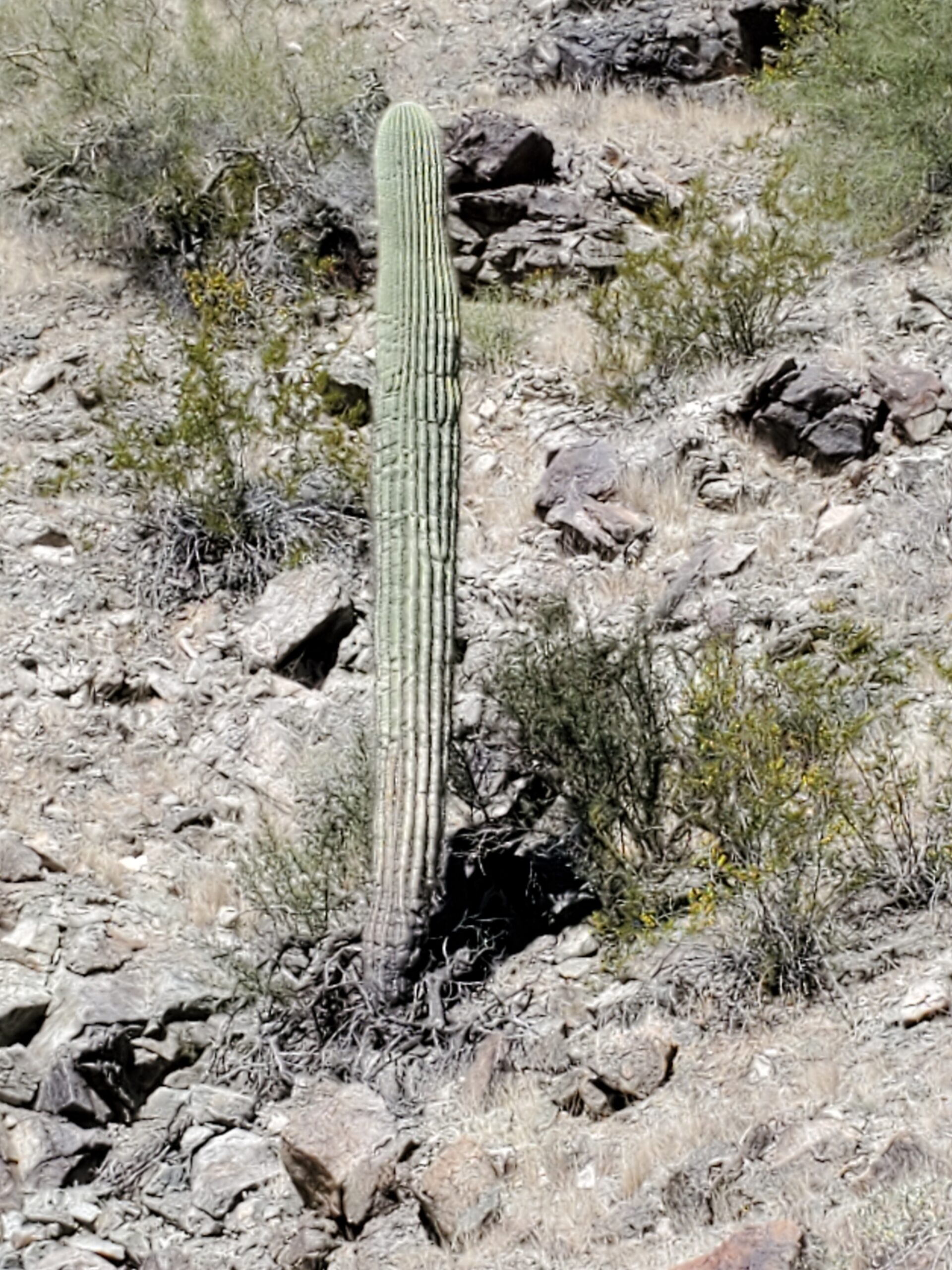 The Saguaro is the tallest growing cactus in Arizona. It can live for hundreds of years and reach soaring heights due to its strong woody rib structure. Mature plants are extremely drought tolerant and can withstand the full desert sun. Young plants usually grow under a nurse plant for shade and can only survive during years where there is extra rainfall. When planted in a garden, it is recommended to never water them, except possibly in a dry period in the middle of summer. It is easy to kill a Saguaro from overwatering/root rot, but nearly impossible to kill a mature plant from drought.
The Saguaro is the tallest growing cactus in Arizona. It can live for hundreds of years and reach soaring heights due to its strong woody rib structure. Mature plants are extremely drought tolerant and can withstand the full desert sun. Young plants usually grow under a nurse plant for shade and can only survive during years where there is extra rainfall. When planted in a garden, it is recommended to never water them, except possibly in a dry period in the middle of summer. It is easy to kill a Saguaro from overwatering/root rot, but nearly impossible to kill a mature plant from drought.
Buckhorn Cholla (Cylindropuntia acanthocarpa)
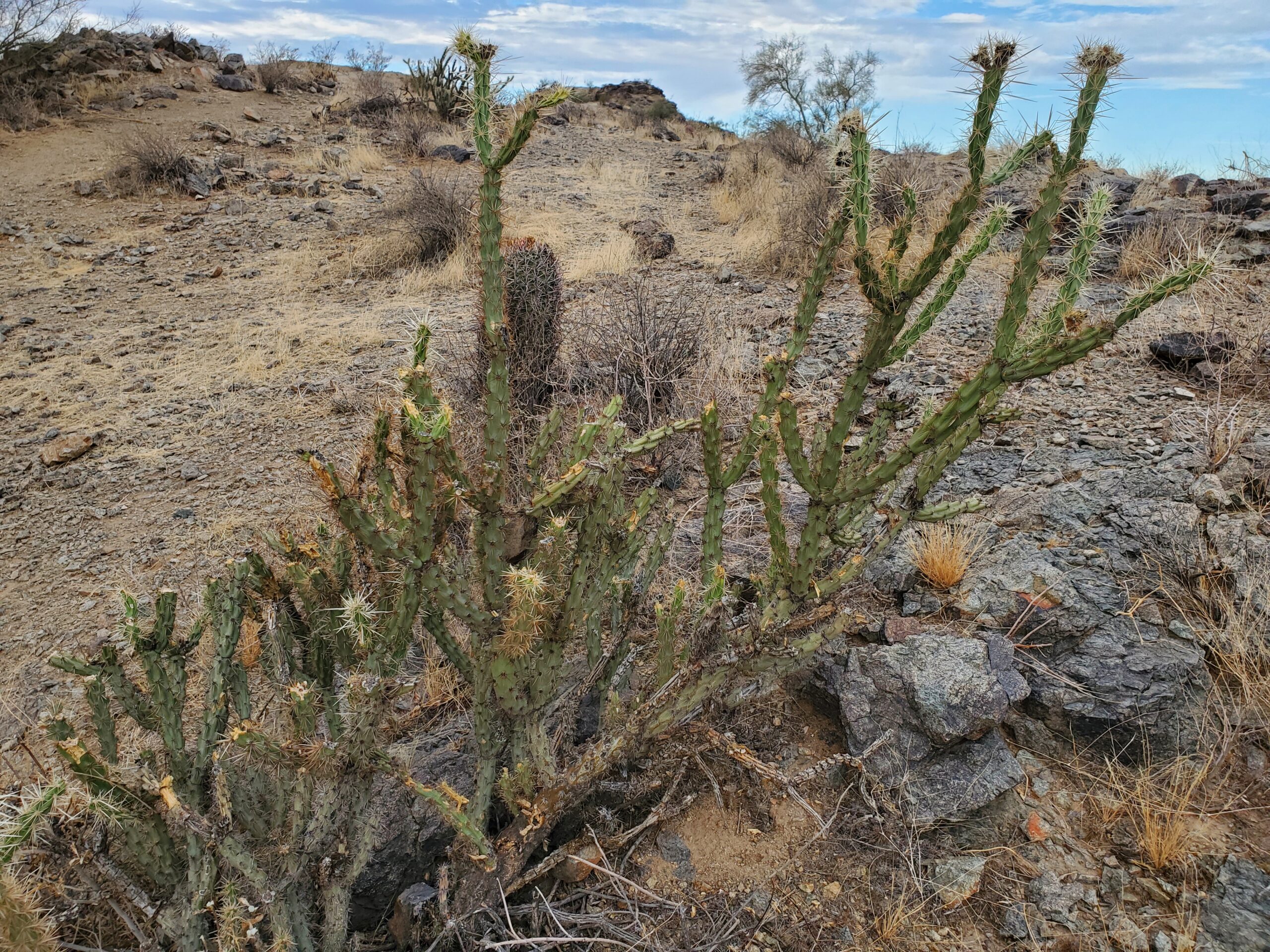 This is one of the most common cacti in the Arizona desert. Cholla have barbed spines that stick to passing animals and rip a section of the cactus off. Then when the piece of cactus falls to the ground, it sends out new roots and starts a new plant. This is much easier than growing from seeds, so it explains why there is an abundance of these cacti.
This is one of the most common cacti in the Arizona desert. Cholla have barbed spines that stick to passing animals and rip a section of the cactus off. Then when the piece of cactus falls to the ground, it sends out new roots and starts a new plant. This is much easier than growing from seeds, so it explains why there is an abundance of these cacti.
Desert Christmas Cholla (Cylindropuntia leptocaulis)
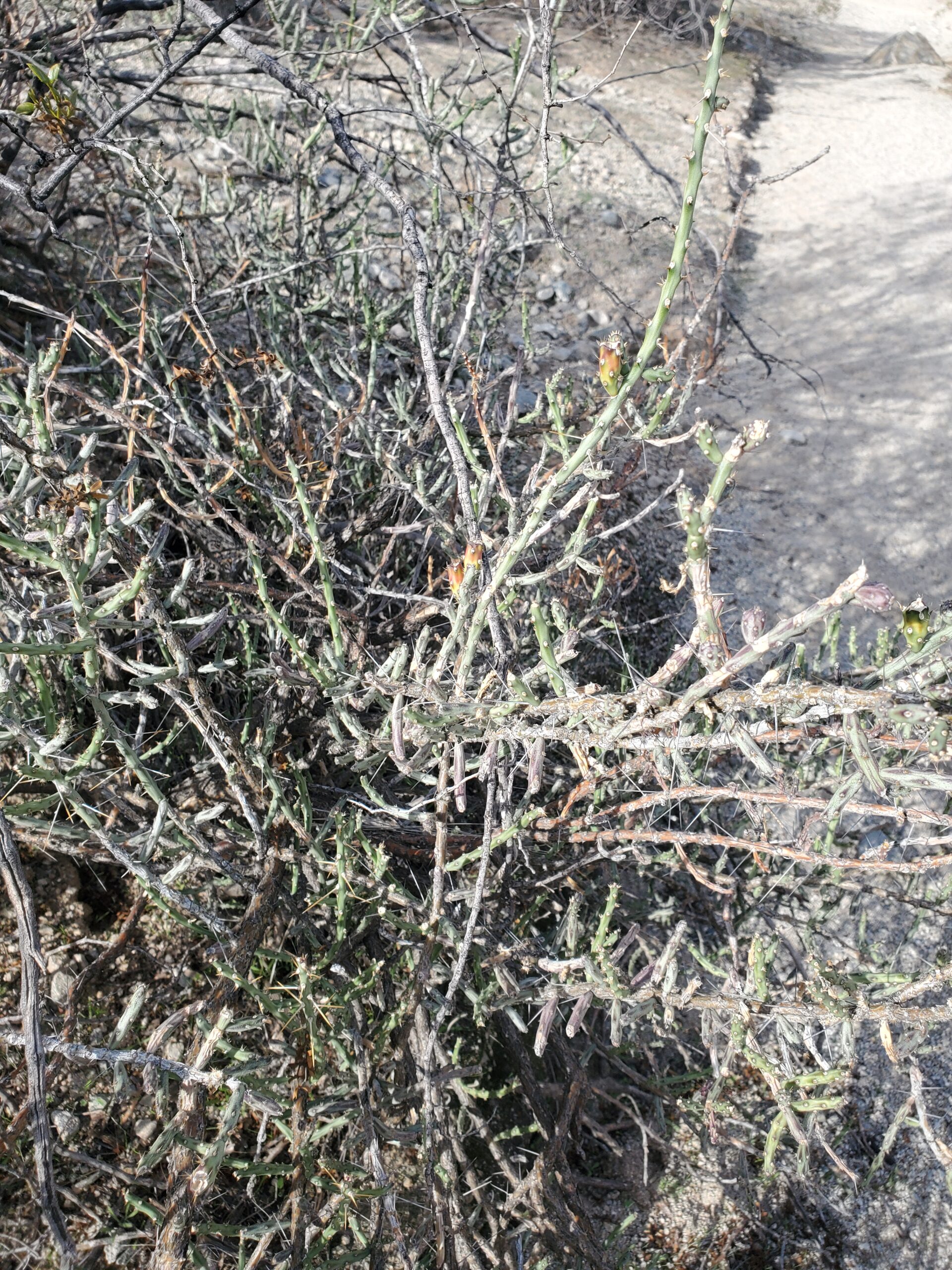 This cholla produces bright red fruit around Christmas time, hence the name. It has very skinny arms, even for a cholla. It often grows under trees or bushes and can use them for support. This specimen was found on South Mountain near Pima Canyon Trailhead, but it is not common or easy to find in the area. I cannot seem to find it there anymore, I hope it was not poached.
This cholla produces bright red fruit around Christmas time, hence the name. It has very skinny arms, even for a cholla. It often grows under trees or bushes and can use them for support. This specimen was found on South Mountain near Pima Canyon Trailhead, but it is not common or easy to find in the area. I cannot seem to find it there anymore, I hope it was not poached.
Turk’s Head Cactus (Echinocactus horizonthalonius)
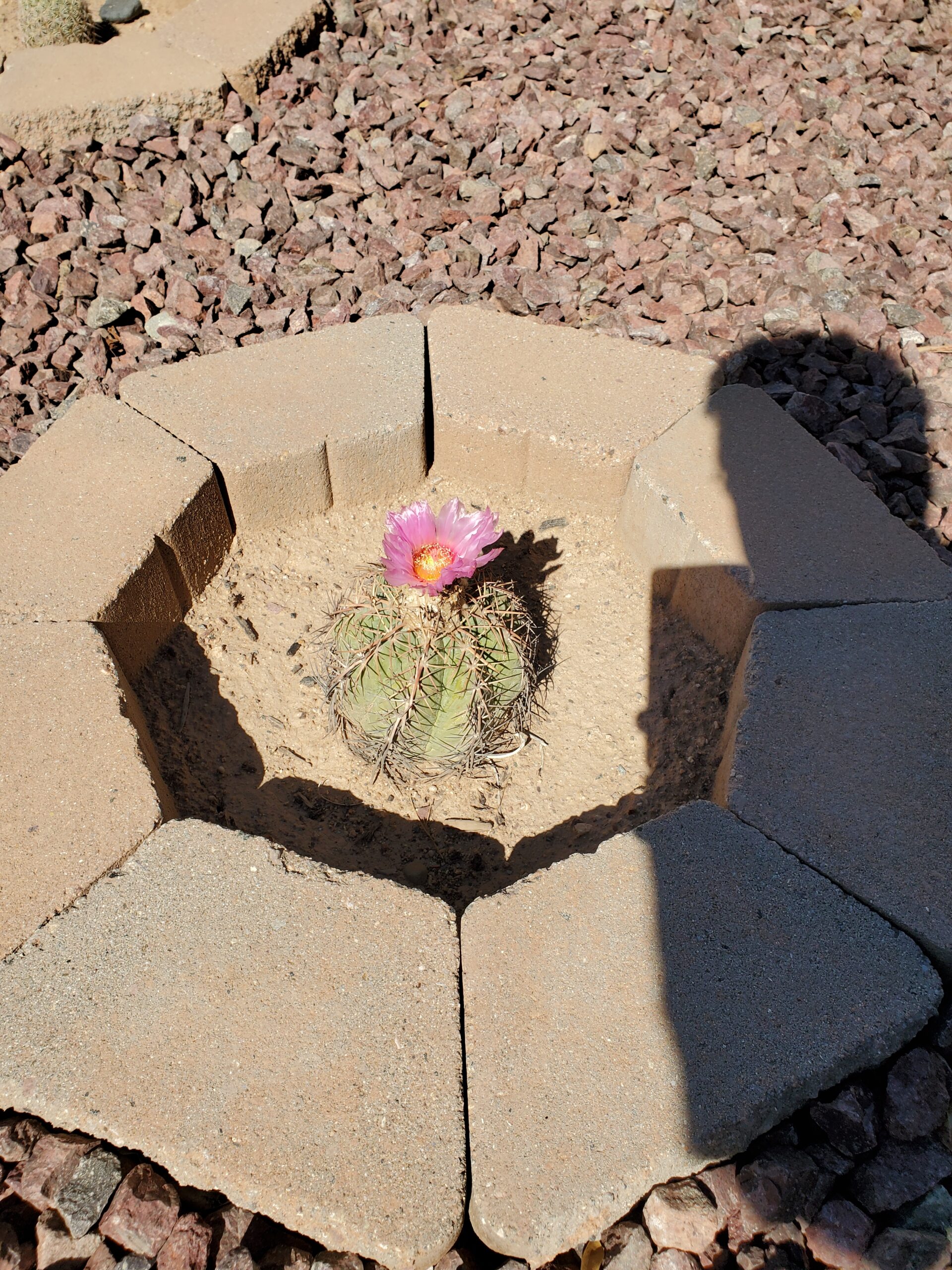 The Turk’s Head Cactus is less common but easy to identify. At the top of its crown it has a woolly substance that remains all year round. It opportunistically sprouts huge pink flowers, but they only last for one day! It is slow growing and typically only reaches about one foot high. There is an endangered subspecies (var. nicholii) that is primarily local to southern Arizona.
The Turk’s Head Cactus is less common but easy to identify. At the top of its crown it has a woolly substance that remains all year round. It opportunistically sprouts huge pink flowers, but they only last for one day! It is slow growing and typically only reaches about one foot high. There is an endangered subspecies (var. nicholii) that is primarily local to southern Arizona.
Robust Hedgehog (Echinocereus fasciculatus)
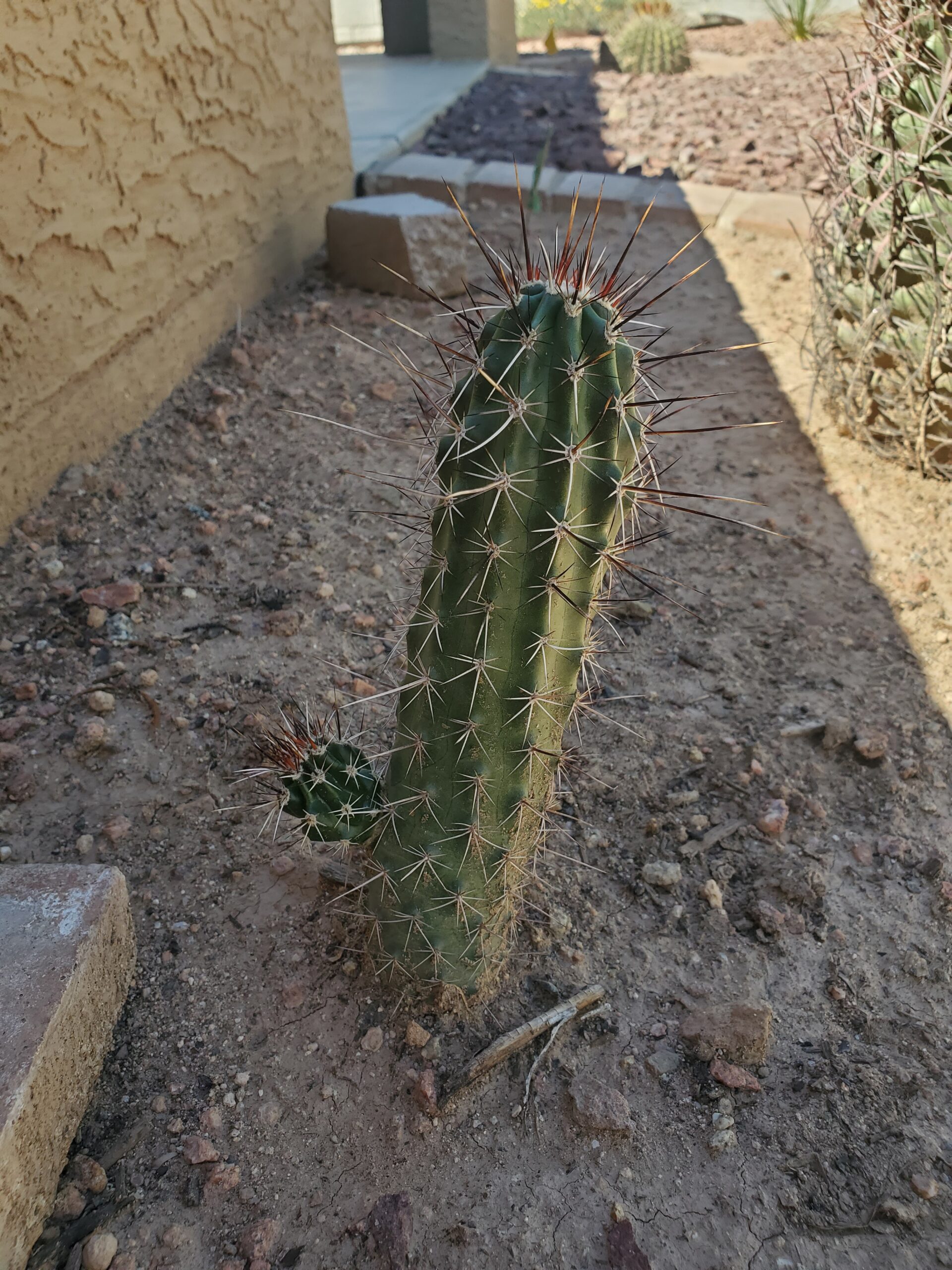 Hedgehog cacti form short mounds with many branching heads. They often have spectacular flower displays in the spring. The robust hedgehog has purple flowers.
Hedgehog cacti form short mounds with many branching heads. They often have spectacular flower displays in the spring. The robust hedgehog has purple flowers.
Desert Barrel Cactus (Ferocactus acanthodes)
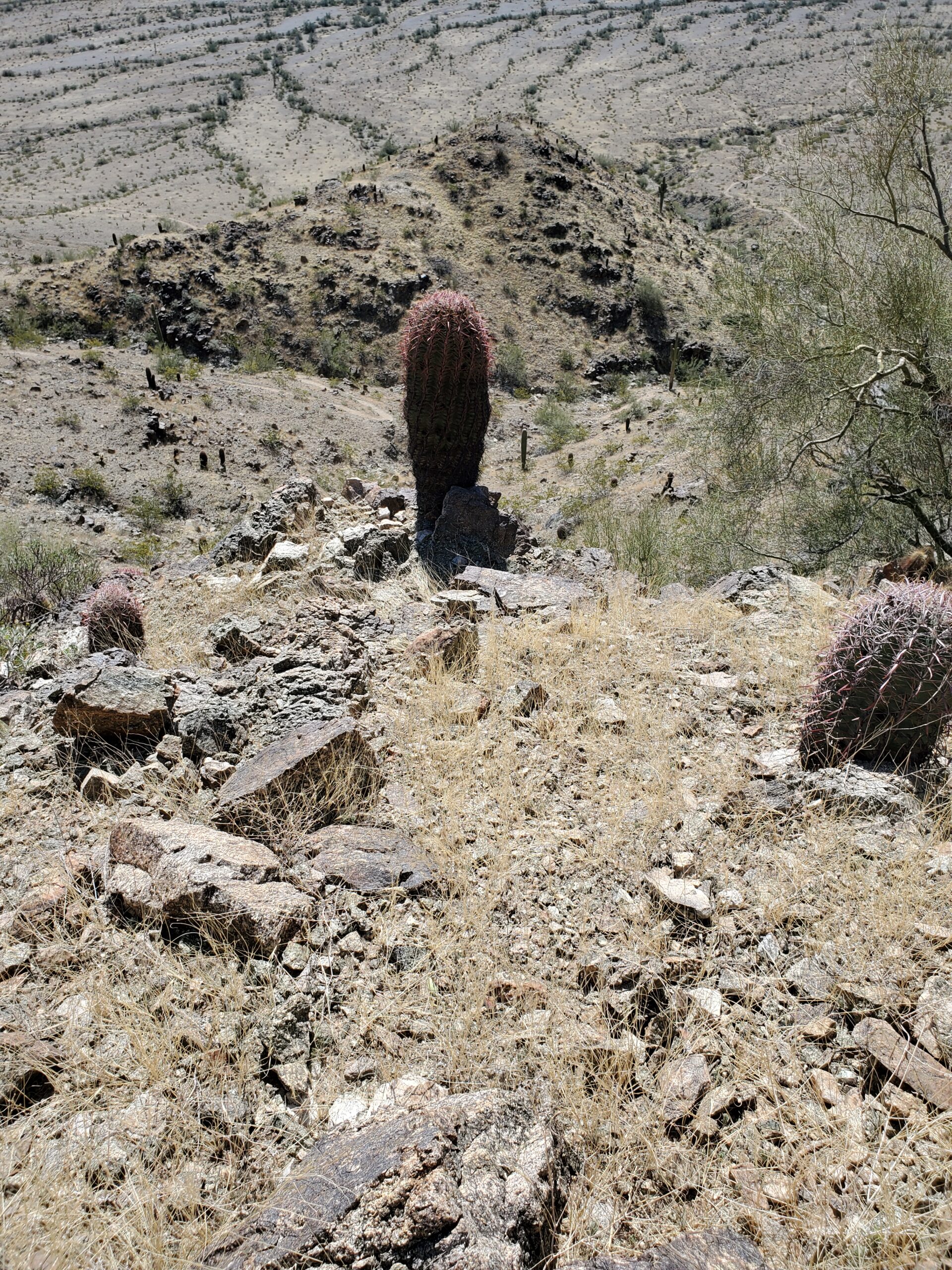 The Desert Barrel is the most drought tolerant barrel cactus and is found in the dryest areas of the desert. It has beautiful red spines that really stand out after a rainfall. On its crown, it produces flowers and fruits in the early summer. Eventually, this cactus comes to an untimely demise when it grows too big to support itself and it topples over. At this point, making a cutting of the cactus may be useful in continuing its life.
The Desert Barrel is the most drought tolerant barrel cactus and is found in the dryest areas of the desert. It has beautiful red spines that really stand out after a rainfall. On its crown, it produces flowers and fruits in the early summer. Eventually, this cactus comes to an untimely demise when it grows too big to support itself and it topples over. At this point, making a cutting of the cactus may be useful in continuing its life.
Arizona Fishhook Cactus (Mammillaria grahamii)
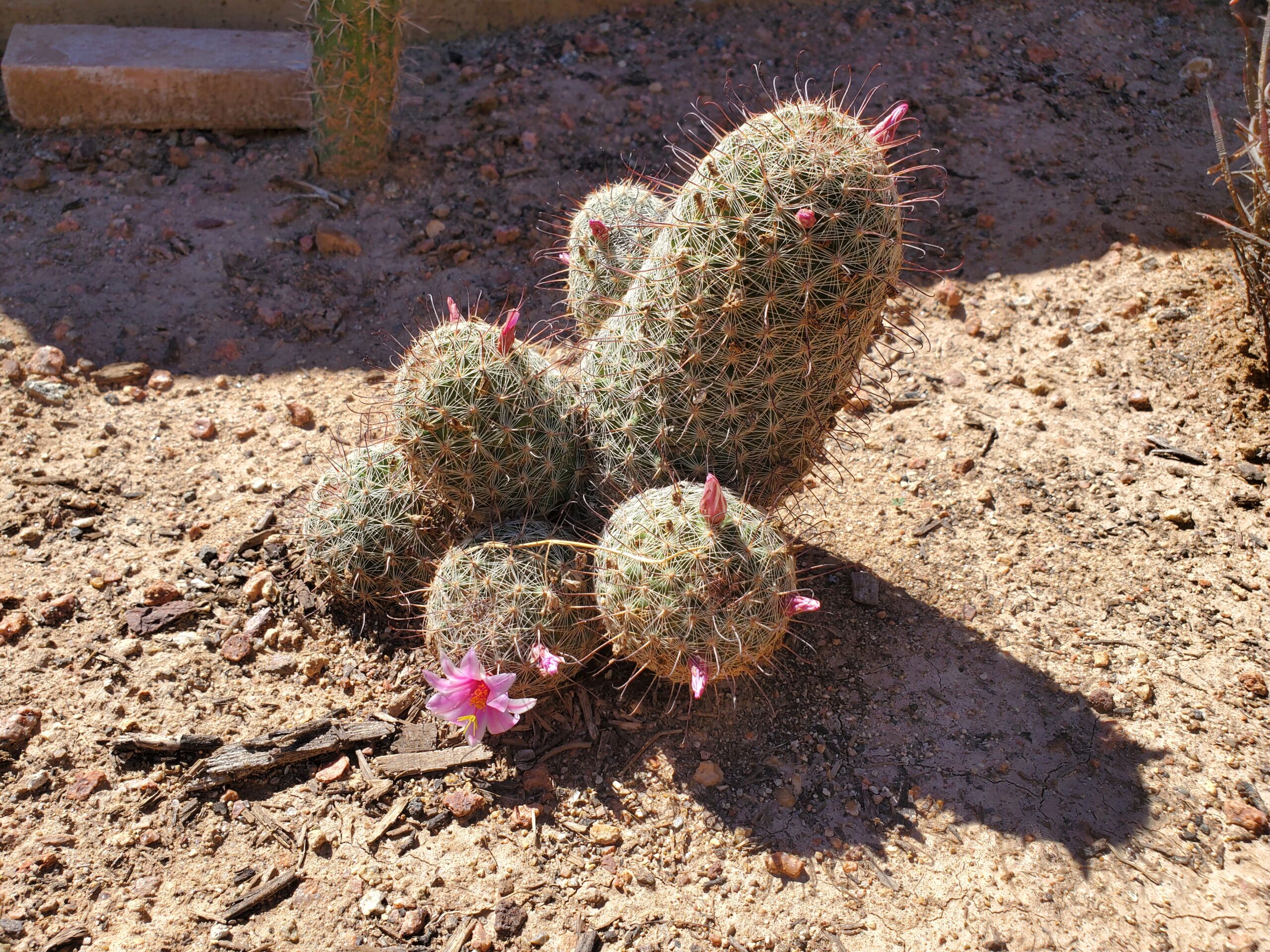 There are many species of Mammillaria, but few of them are found in Arizona. The Arizona Fishhook Cactus is an exception due to its hardiness. It grows in small clumps, producing pink flowers many times throughout the summer. It has small red fruit that looks like a pepper.
There are many species of Mammillaria, but few of them are found in Arizona. The Arizona Fishhook Cactus is an exception due to its hardiness. It grows in small clumps, producing pink flowers many times throughout the summer. It has small red fruit that looks like a pepper.
Englemann’s Prickly Pear (Opuntia engelmannii)
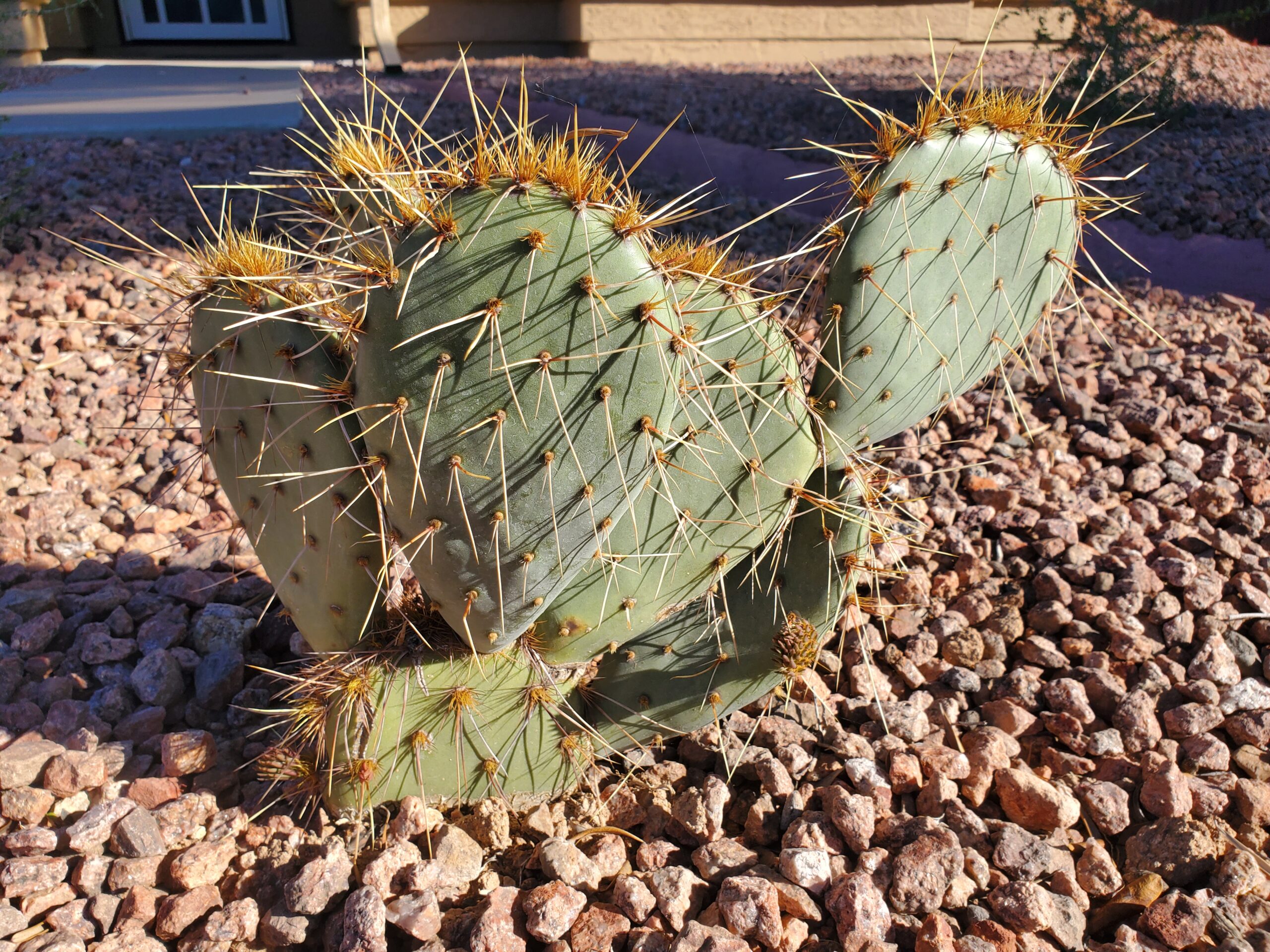 Englemann’s Prickly Pear is the most widespread and common prickly pear in Arizona deserts. In certain areas, this prickly pear can take on unique attributes like fuzzy spines. Despite the spines and glochids (tiny slivers), many desert animals will eat the pads and/or fruit from this cactus, including javelina, jackrabbits, and desert tortoise.
Englemann’s Prickly Pear is the most widespread and common prickly pear in Arizona deserts. In certain areas, this prickly pear can take on unique attributes like fuzzy spines. Despite the spines and glochids (tiny slivers), many desert animals will eat the pads and/or fruit from this cactus, including javelina, jackrabbits, and desert tortoise.
Beaver Tail Prickly Pear (Opuntia basilaris)
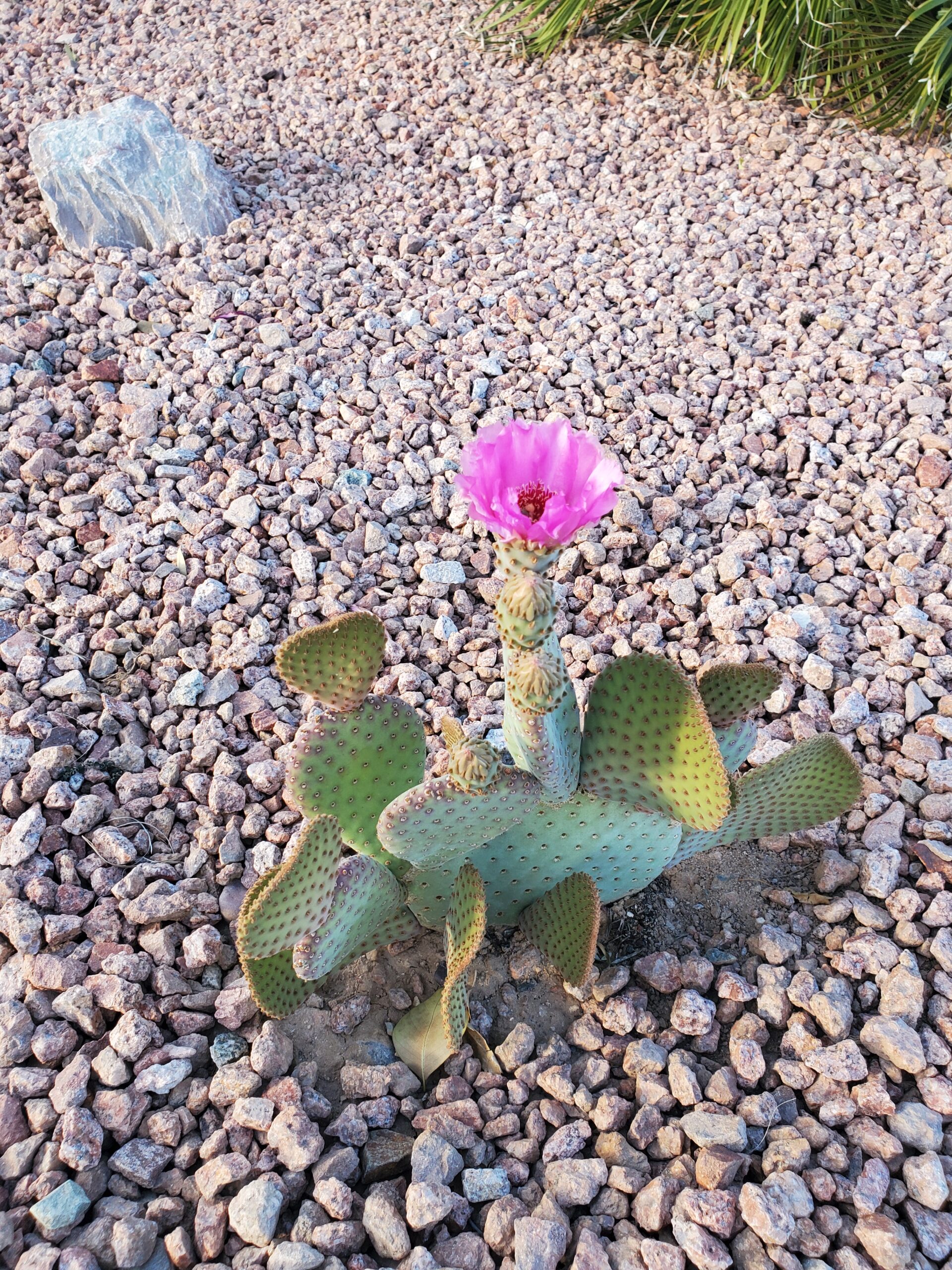 The most drought tolerant of prickly pears, this one spreads low to the ground. It produces beautiful pink flowers in the spring. There are no spines, but there are plenty of glochids.
The most drought tolerant of prickly pears, this one spreads low to the ground. It produces beautiful pink flowers in the spring. There are no spines, but there are plenty of glochids.
Arizona Queen of the Night (Peniocereus greggi)
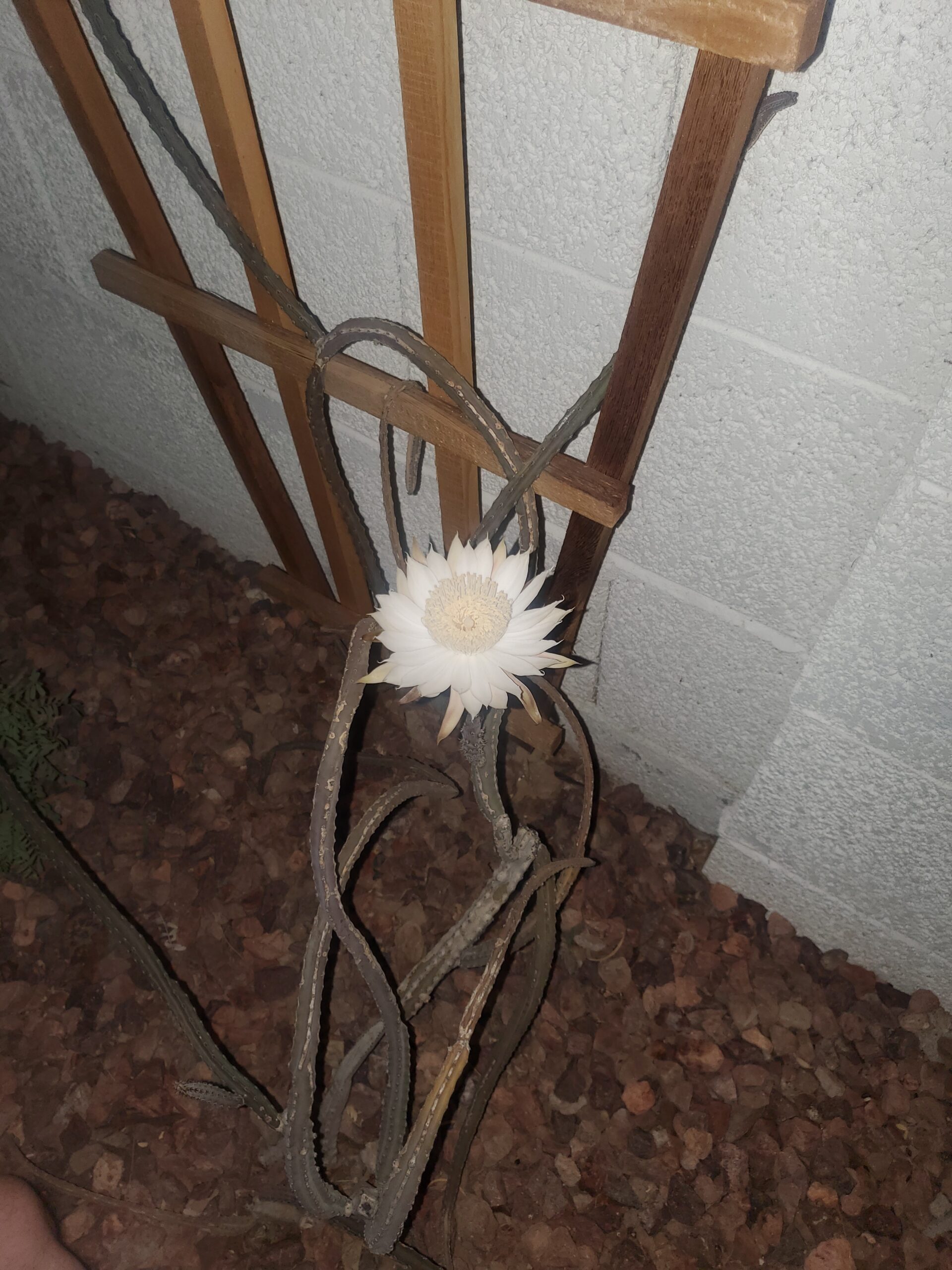 The Queen of Arizona desert cacti, this species of vining cactus is inconspicuous for most of the year. It prefers to grow under a tree or bush and can maniupulate its branches to climb. It only blooms one night per year, usually in June. Mysteriously, all the plants bloom on the same night, which is necessary for cross pollination. Despite being easy to propagate from cuttings, it is difficult to find this cactus at nurseries because it is not showy.
The Queen of Arizona desert cacti, this species of vining cactus is inconspicuous for most of the year. It prefers to grow under a tree or bush and can maniupulate its branches to climb. It only blooms one night per year, usually in June. Mysteriously, all the plants bloom on the same night, which is necessary for cross pollination. Despite being easy to propagate from cuttings, it is difficult to find this cactus at nurseries because it is not showy.
